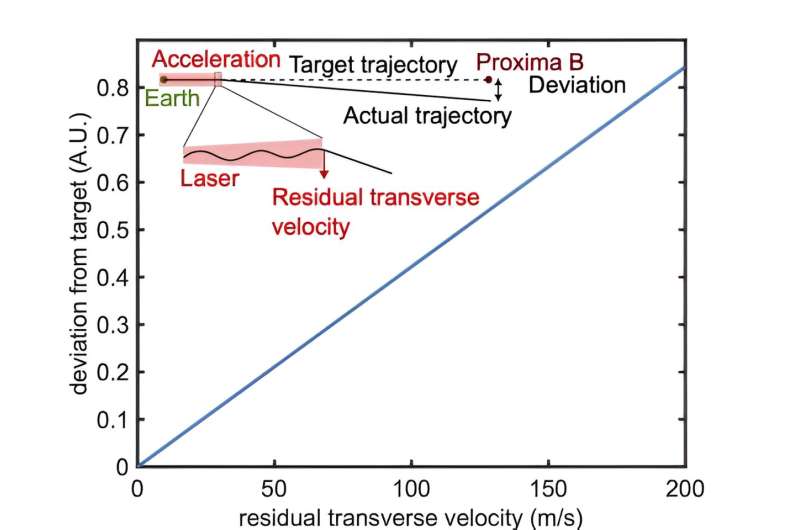This article has been reviewed according to Science X's editorial process and policies. Editors have highlighted the following attributes while ensuring the content's credibility:
fact-checked
trusted source
proofread
How could laser-driven lightsails remain stable?

It's a long way to the nearest star, which means conventional rockets won't get us there. The fuel requirements would make our ship prohibitively heavy. So an alternative is to travel light. Literally. Rather than carrying your fuel with you, simply attach your tiny starship to a large reflective sail, and shine a powerful laser at it.
The impulse of photons would push the starship to a fraction of light speed. Riding a beam of light, a lightsail mission could reach Proxima Centauri in a couple of decades. But while the idea is simple, the engineering challenges are significant, because, across decades and light-years, even the smallest problem can be difficult to solve.
One example of this can be seen in a recent arXiv preprint paper. It looks at the problem of how to balance a lightsail on a laser beam. Although the laser could be aimed directly toward a star, or where it will be in a couple of decades, the lightsail would only follow the beam if it is perfectly balanced.
If a sail is slightly tilted relative to the beam, the reflected laser light would give the lightsail a slight transverse push. No matter how small this deviation is, it would grow over time, causing its path to drift ever away from its target. We will never align a lightsail perfectly, so we need some way to correct small deviations.
For traditional rockets, this can be done with internal gyroscopes to stabilize the rocket, and engines that can dynamically adjust their thrust to restore balance. But a gyro system would be too heavy for an interstellar lightsail, and adjustments of the beam would take months or years to reach the lightsail, making quick changes impossible. So the authors suggest using a radiative trick known as the Poynting–Robertson effect.

The effect was first studied in the early 1900s and is caused by the relative motion between an object and a light source. For example, a dust grain orbiting the sun sees light coming at a slight forward angle due to its motion through sunlight. That little forward component of light can slow down the asteroid ever so slightly. This effect causes dust to drift toward the inner solar system over time.
In this paper, the authors consider a two-dimensional model to see how the Poynting–Robertson effect might be used to keep our lightsail probe on course. To keep things simple, they assumed the light beam to be a simple monochromatic plane wave. Real lasers are more complex, but the assumption is reasonable for a proof of concept. They then showed how a simple two-sail system can use the effects of relative motion to keep the craft in balance. As the sails tilt off course slightly, a restorative force from the beam counters it. Thus proving the concept could work.
However, the authors noticed that over time the effects of relativity come into play. Earlier studies have taken the Doppler effect of relative motion into effect, but this study shows the relativistic version of chromatic aberration would also come into play. The full relativistic effects would need to be accounted for in a realistic design, which would require sophisticated modeling and optics.
So a lightsail still seems like a possible way to reach the stars. We just have to be careful not to make light of the engineering challenges.
More information: Rhys Mackintosh et al, Poynting-Robertson damping of laser beam driven lightsails, arXiv (2024). DOI: 10.48550/arxiv.2401.16924
Provided by Universe Today



















